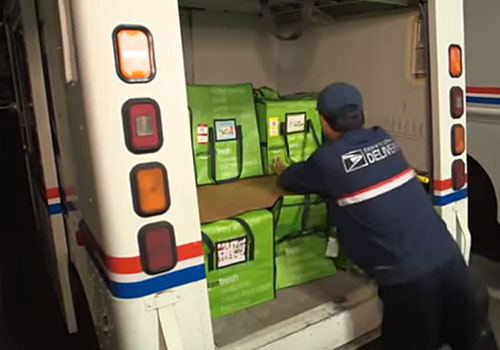
The Postal Service and What the May 11 Rate Increases Mean to You
Know the opportunities available to mitigate the impact of these rate increases while improving the shopping experience of customers By Kevin Brow. Know the opportunities available to mitigate the impact of these rate increases while improving the shopping experience of customers By Kevin Brown
If your business is one of the countless companies that rely on the United States Postal Service, if you have not yet done so, it's time to take a look at how the May 11 rate increase will impact your business.
As a nation, we have faced a lot of grim news. Reports from the first quarter show that the country's gross domestic product shrank at a rate of 6.1 percent, which is much worse than leading economists' predictions. This continued downturn affects all of us, including the Postal Service.
Recently, much has been made about Postmaster General John Potter's comments to Congress about how the economy has impacted the Postal Service. Industry observers have thrown around caustic terms such as "bailout" and "bankruptcy" without reading Mr. Potter's full statement.
Potter asserted that the Postal Service is like any other business and therefore not immune from the current economic downturn and, just like many other organizations, the economy is having a very real and negative impact on the organization's finances. From his comments, it is clear that Potter and his team have a firm understanding of their business and know what steps must be taken to ensure that the American public continues to receive the unparalleled service that it has always received. While all of the needed steps are not easy, they are essential.
It is a commonly held myth that the Postal Service relies on taxpayers to fund its operations. In fact, the Postal Service is a completely self-sufficient organization. In order for the Postal Service to sustain operations, it must cover 100 percent of its costs as with any business. If it is unable to do so, the Postal Service must find ways to:
Increases revenues
Improve net income on products and services
Reduce costs
Use a combination of the three
Understanding Rate Increases by Mail Class
It is important to note that the rate increase going into effect on May 11 is for Market Dominant products, which is completely separate from the January rate increase that impacted Competitive products such as Parcel Select and Parcel Return Service (products most often offered in conjunction with workshare partners of the USPS), Express Mail and Priority Mail. The following mail classes will see some degree of change in their pricing structure(s) in the days ahead:
First-class Mail
Standard Mail
Periodicals
Package Services (Parcel Post, Bound Printed Matter, Media & Library Mail, and Standard Parcels)
Special Services
First-class Mail International
While the Postal Service has increased costs, it has also implemented cost saving initiatives where possible. The "Forever" stamp was designed and issued to ease the cost of future changes for postage held by mailers. The Postal Service has also made heavy investments in technology and facilities upgrades designed to not only lower costs, but also improve service.
Despite these investments, any type of increase in costs is painful. This pain is magnified at a time when most companies are looking for areas of incremental costs savings to survive.
The Postal Service and What the May 11 Rate Increases Mean to You Know the opportunities available to mitigate the impact of these rate increases while improving the shopping experience of customers By Kevin Brown
The good news is that there are opportunities available to mitigate the impact of these rate increases while improving the shopping experience of customers. The key is to make sure that shippers and mailers have a firm understanding of their business, the expectations their customers have regarding the delivery and a complete understanding of how the pending rate increases will impact them.
Know the Rates. Know the Classifications.
To start, it is important to create a frame of reference for the Postal Service rate increase as a whole. It is very likely that the mailer or shipper is using multiple mail classes to manage business needs. That said, it is also likely that the mailer or shipper is leveraging the services of a commercial carrier for components of its transportation strategy. The Postal Service has always worked very hard to minimize the rate increases across their portfolio of services, while meeting the cost coverage requirements mandated by Federal Law.
For high-volume mailers that ship Letters and Flats, the news is relatively good. While there are some exceptions within each of these classifications, the increases should be very manageable for most businesses. Please see Figure 1 for some examples.
In addition to maintaining a relative flat line for increases across First-class, Standard Mail and Periodicals, there are also opportunities within these classifications to reduce handling and processing costs. One of the Postal Service's goals is to more closely align their operating and cost structures in an effort to streamline business practices. The Postal Service is committed to working with their customers and business partners to identify areas where processes can be improved and savings can be realized. As you evaluate your mail environment, consider the following areas as you work with your Postal representative:
Examining alternative ways mail can be prepared prior to mailing.
Looking at the use of technology to streamline operations.
Selectively lowering rates in an effort to incent higher mail volumes.
To this point, Package Services rates are receiving an average increase of 3.8 percent across the classification. Package Services is a classification within the Postal Service's portfolio that is very rich in the services it offers, resulting in many commercial and retail customers heavily relying on this set of products to meet their respective. And this portfolio of products it is a critical part of the Postal Service's future success because it allows the USPS to compete directly with commercial carriers for large-volume customers. However, as these products become a larger part of the organization's total volume it becomes increasingly important that the products cover their costs while remaining competitive in the marketplace.
Bound Printed Matter (BPM) Flats will actually see a price reduction from the current rates, while Parcels will see an increase. Retail Parcel Post rates will see a moderate increase over the previous rate, while increases to media/library mail will have a more significant, yet manageable, impact.
The largest cause for concern is the impact that the rate increase will have on Standard Parcels. At a whopping 16.4 percent average increase for packages entered at the BMC, many small parcel shippers have to consider what this will mean to their budgets and business. While most shippers can adjust what they charge their customers for shipping and handling expenses, it is very painful to pass along a full increase of this amount.
What is particularly difficult about this rate increase is in the complexity to quantify its business impact, especially as it relates to Standard Parcels. In years past, the proposed increase would typically be levied across all sorts injected to the Postal network for delivery to the end-customer. Given that is not the case with this year's rate increase, it is imperative that businesses understand every detail of their sort capabilities. Here are a few facts to consider:
1. The single largest component impacting costs and service is the new minimums required to secure the discount for BMC entry. The new requirement mandating a 200- pound minimum drop per BMC will force many mailers to produce mixed sorts, potentially driving costs up by as much as 54 percent.
2. By eliminating the ADC sort, Standard Mail weighing less than 6 ounces will see rates increase by as much as 57 percent.
3. The BMC entry rates increase based on the weight of the parcel and could be anywhere from 13.5 percent to 35 percent.
4. SCF entry rates increase from 2 percent to 8 percent.
5. DDU rates have decreased slightly.
If businesses do not have the Standard Parcel volume required to support 200-pound minimums to every BMC in a reasonable amount of time, costs will increase drastically while service to deliver could suffer as they aggregate freight for an extended period of time in an effort to meet the minimum requirements. This may present significant issues for those companies that rely on Standard Mail to support their shipping activities. Bound Printed Matter shippers need to be careful of this change, because oftentimes as much as 20 percent of their total mail volume is handled as Standard Mail.
Managing Your Opportunity
Despite the May 11 rate increases, there are opportunities to lower costs and improve service. In the case of Standard Parcel shippers, the opportunity is significant. The Postal Service is working diligently to reduce costs, and is looking to its customers and business partners to help them do so. For many Standard Parcel shippers, it is no longer going to be feasible for them to manage their own sorts and enter mail locally. This is where the workshare partners of the Postal Service may be able to help, more commonly referred to as "consolidators."
A Postal consolidator can provide the best opportunity to contain postage costs, while improving internal processes and improving the customer delivery experience. They can help businesses achieve goals by:
Looking at the total mail volume and identifying those classifications where they may have solutions available (mail, parcels, and returns).
Determining if there are services available that will eliminate the business' need to manage its own mail sort, manage the injection of the mail to a local postal facility and/or support a CAPS account to manage postage costs.
Streamlining the internal handling processes that take considerable time and energies such as certifying mail and managing the documentation processes required to support the mailing process.
Providing more competitive rates by consolidating mail and parcels with their other clients' shipments to qualify for steeper discounts.
Improving the delivery experience for customers by injecting the mail in a destination facility, leading to improved delivery times and more satisfied customers.
The goal should be to identify ways to maximize savings while improving the customer experience.
In Conclusion
The United States Postal Service has been a trusted partner of businesses and consumers alike for more than 200 years. In turbulent times, all organizations must make difficult decisions in an effort to solidify their operations. The Postal Service should be applauded for the work that they do in serving more than 150 millions addresses six-days per week. Despite the challenges they are facing, I am confident that they will continue to be a trusted partner in the years and decades ahead.












